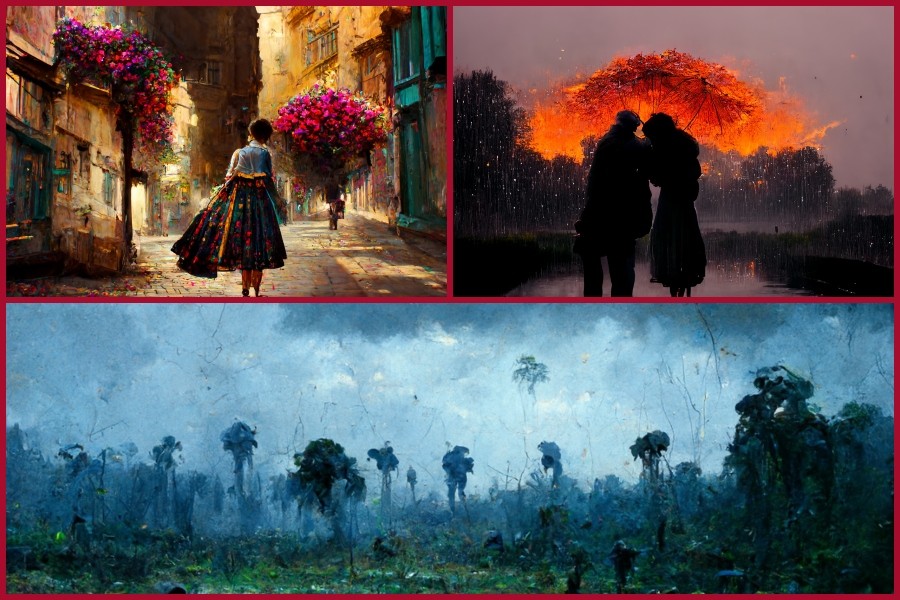The recent craze for creating images using artificial intelligence (AI) software like Midjourney and Dall-E has gripped the internet.
Even people with no knowledge of art can create decent AI-generated art by simply giving a few specific commands and whatever they have in mind, no matter how wild or vague that is, and voila! The AI bots create a set of images. With these AI systems, that's now possible. People can create realistic images of people, landscapes, or anything that can be imagined.
Now, what is AI-generated artwork? According to Artland Magazine, AI-generated art describes art created by a computer or machine learning algorithm, as opposed to a human. Art created using artificial intelligence can include images or sculptures generated based on a text description.
Artificial intelligence has come a long way in the past few years. Recently, multimodal learning, such as text-to-image synthesis and image-text contrastive learning, has transformed the tech community and captured widespread public interest. Specifically, AI software has been successfully used for creative image generation and editing applications, such as MidJourney and Dall-E.
On October 25, 2018, the first portrait generated with the help of AI for USD 432,500, titled 'Portrait of Edmond Bellamy,' kickstarted a new era when the artists would need to rethink their way of livelihood.
The AI artwork sold nearly 45 times its high estimate, making Christie's the first auction house to offer a work of art created by an algorithm.
And now, in 2022, we see Dall-E and MidJourney taking the internet by storm. The AI can create intricate images that humans would take hours or days to complete in a matter of seconds. And it does not take much technical know-how to develop top-notch artworks, as the writer himself, despite having zero knowledge about digital arts, has created these images using MidJourney AI by simply giving a few prompts and commands.
Now might be a good time to ask, "Is it the end of the digital artists?"
With the advent of AI, the artist as an operator becomes a functionary of a system, and it is a system that no longer depends solely on that individual for it to exist. While early application of a new tool into a pre-existing condition may enhance or change some of the terms of that condition favourably over time, the entire program will be adapted to serve the tools' capacity.
With the ever-increasing capacities of the tool, an entirely different condition has become manifest in digital technology. So, in the near future, the artist as an operator becomes a tool of a system, and it is a system that no longer depends solely on that artist to create art.
However, this problem could be many years away, with AI image-creating technology still in its infancy. So, for now, there is nothing to worry about, as huge amounts of computing power are required to train AI illustrators on enormous data sets. This acts as a limiting factor, allowing only the largest technology conglomerates with deep pockets in the race to develop the technology.
Besides, humans still have the edge over AI, as by cutting out repetitive tasks, human ingenuity can take firm control, which AI stands no chance of replacing in its current form. It contributes to their productivity, freeing up time to explore original ideas.
The creative industry will, nevertheless, be affected by these developments. The quantity of work and timescale deadlines set by clients will shift as the artistic process becomes more efficient.
So, expecting software, instead of a human, to create a bespoke masterpiece is still a long way off. Right now, AI art lacks humanity, dignity, honour, and originality, so much so that even the best effort of today's AI technology does not come close to 'true art.'
Marcus du Sautoy, an Oxford mathematician, argues that we should see the relationship between AI and humans as both adversarial and collaborative. He believes AI can get creative humans out of their usual ruts and spur them to think in new directions.
In that sense, artificial intelligence can give artists new tools to work with and, in that sense, shape the industry drastically. Like how digital painting has been taking over traditional media like watercolour and oil painting. Artists have to adapt to the increase in technology.
But the 'artist' itself can never be replaced by AI. Once we understand the artist's role, we will understand why artificial intelligence will never be a threat. The artist's role is to communicate an experience of life. The only entity that can do that is humans.


